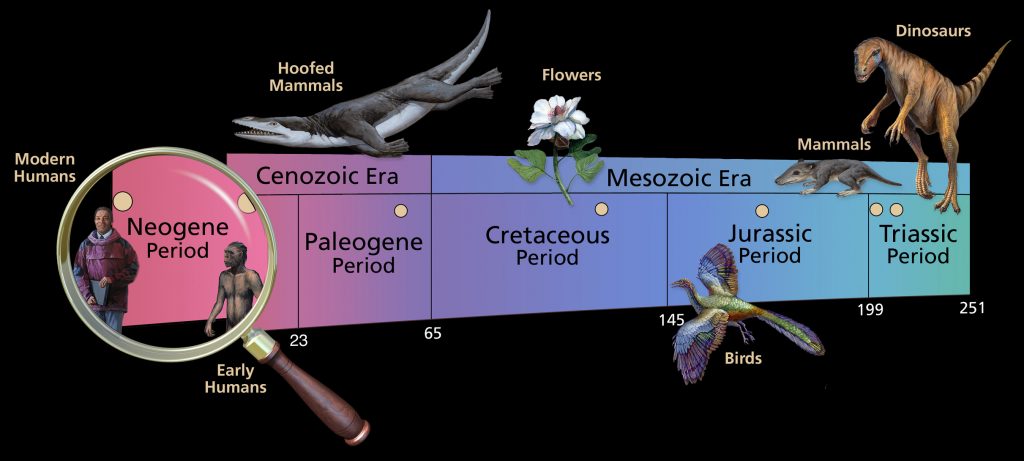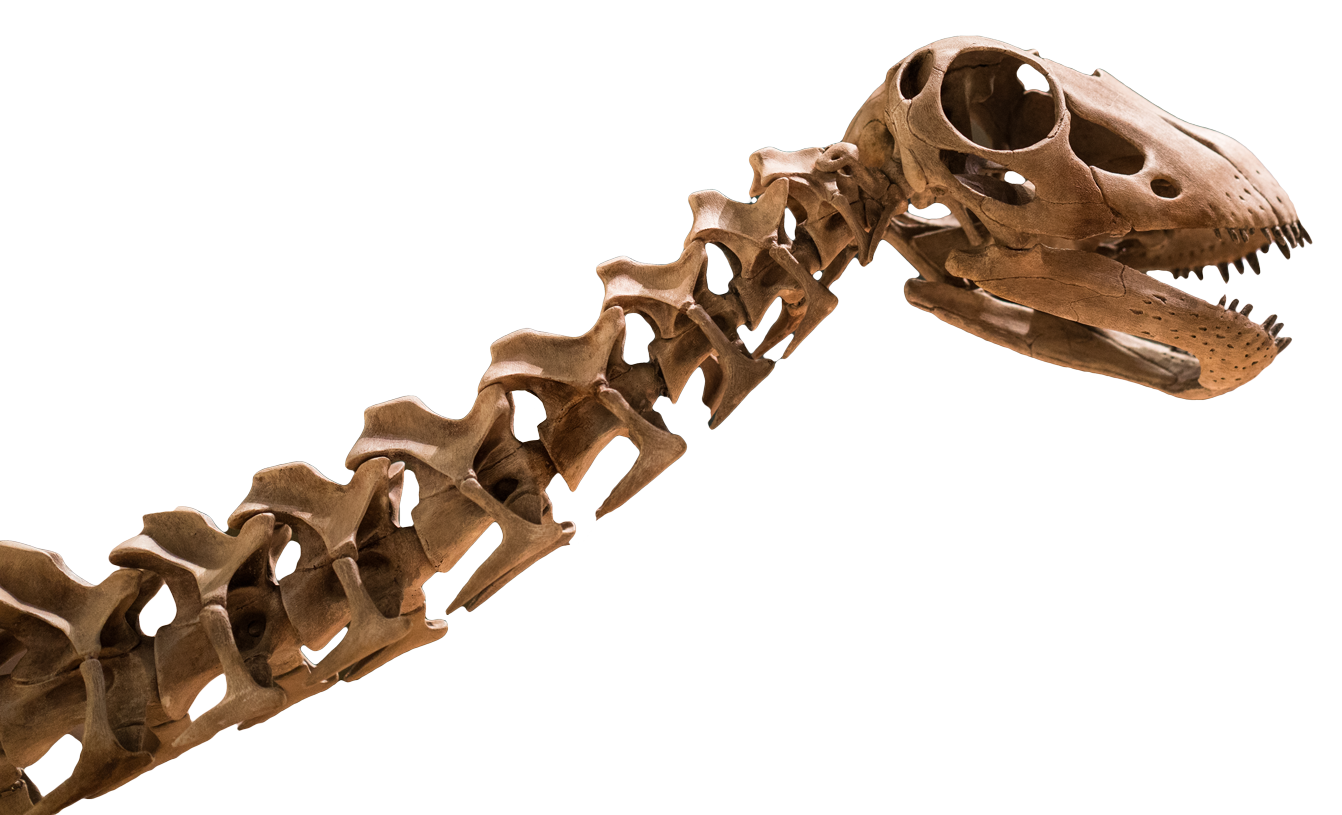The Earth is about 4.5 billion years old. The geological time scale divides up this vast time interval. This scale is most detailed for the time in which life was abundant, as shown by fossils.
Geological Timescale

The oldest fossils are between 3 billion and 3.5 billion years old. These are fossil bacteria, and for most of Earth history, life was simple. More complex animals appeared in the oceans about 565 million years ago, and became much more common about 542 million years ago. This last point in time is the start of a division of geological time called the Phanerozoic Eon. Phanerozoic means “visible life”, and is the time in which fossils are abundant.
Phanerozoic Eon

The Phanerozoic Eon is divided into three eras, the Paleozoic, Mesozoic and Cenozoic eras. These were named for the kinds of fossils that were present. The Cenozoic is the youngest era and the name means “new life”. This is because the fossils are similar to animals and plants that are common today. The oldest is the Paleozoic Era, which means “ancient life.” Fossils from the Paleozoic Era include animals and plants that are entirely extinct (e.g., trilobites) or are rare (e.g., brachiopods) in the modern world. Mesozoic means “middle life,” and its fossils are a mixture of extinct groups and modern groups of animals and plants.
Paleozoic Era

The Paleozoic era begins with the Cambrian radiation, a time of great growth in the number of different kinds of animals in the oceans. It ends with the greatest extinction in the history of life. Other major extinction events occurred at the end of the Ordovician Period and near the end of the Devonian Period. The Paleozoic Era is also the time in which plants and animals adapted to life on land.
Mesozoic and Cenozoic Eras

The Mesozoic and Cenozoic eras make up the youngest half of the Phanerozoic. The Triassic Period, the youngest period of the Mesozoic Era, was the time in which both mammals and dinosaurs evolved. The Mesozoic ended with a major extinction at the close of the Cretaceous Period. All dinosaurs except birds disappeared in this extinction. Another mass extinction occurred near the end of the Triassic Period. The Cenozoic Era was a time in which communities became more modern in appearance. By the very end of the era (Neogene Period), Homo sapiens, our species, had evolved.


